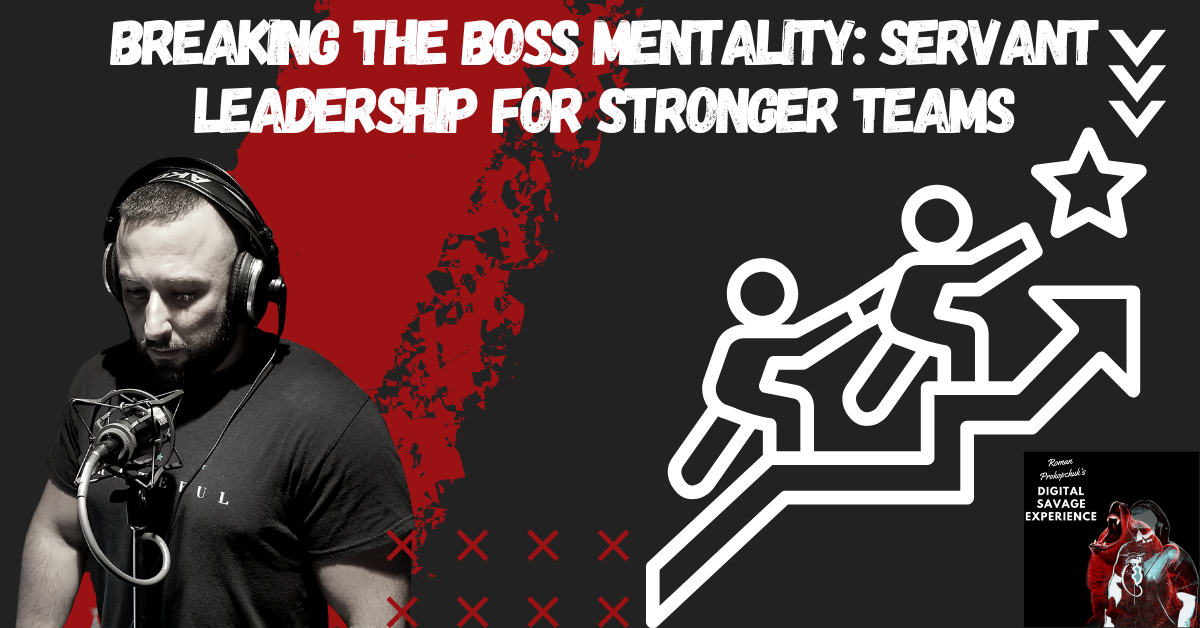
In today’s rapidly changing business environment, organizations thrive not by exerting authority but by cultivating trust, purpose, and collaboration. At the heart of this shift lies servant leadership a philosophy that prioritizes the growth, well-being, and success of team members above all else. Unlike old-school leadership models rooted in command and control, servant leaders inspire loyalty and drive performance by serving first.
Old-School Leadership vs. Servant Leadership
Old-School Leadership
- Authority-driven: Leaders at the top make decisions, employees follow orders.
- Focused on compliance: Success is measured by efficiency and output.
- Transactional: Leaders reward performance and punish failure.
- Detached: Employees often feel like “cogs in the machine” rather than valued contributors.
Servant Leadership
- People-driven: Leaders empower individuals and teams to thrive.
- Focused on growth: Success is measured by both outcomes and personal development.
- Transformational: Leaders inspire through vision, empathy, and trust.
- Inclusive: Employees feel heard, valued, and trusted creating higher engagement and lower turnover.
The difference is clear: Old-school leadership extracts value; servant leadership creates value.
The 8 Habits of High-Impact Servant Leaders
- Listening with Intent
True servant leaders actively listen not just to respond, but to understand. This builds psychological safety and trust.
- Empathy in Action
They put themselves in their team’s shoes, acknowledging challenges while providing the support to overcome them.
- Empowering, Not Controlling
Instead of micromanaging, they trust team members to make decisions, fostering ownership and innovation.
- Vision with Service
They connect individual roles to the broader mission, reminding teams that their work has purpose.
- Commitment to Growth
Servant leaders invest in training, mentorship, and opportunities that stretch their people.
- Accountability with Compassion
Mistakes are treated as lessons, not failures. Leaders guide teams toward solutions rather than blame.
- Community Building
They nurture a culture where collaboration replaces competition, making the workplace feel like a community.
- Leading by Example
Servant leaders model humility, resilience, and ethical behavior showing that leadership is about service, not status.
Why Servant Leadership Builds Engagement Faster
Engaged teams don’t happen by accident; they’re the product of intentional leadership. Servant leadership accelerates engagement because:
- Trust is built quickly when leaders demonstrate care and respect.
- Ownership increases as employees feel empowered to make decisions.
- Purpose is clear, driving intrinsic motivation.
- Retention improves because people stay where they feel valued.
According to Gallup, companies with highly engaged employees see 21% higher profitability. Servant leadership creates this engagement not through fear or force, but through genuine connection and empowerment.
How to Start Practicing Servant Leadership
- Replace “What can my team do for me?” with “What can I do for my team?”
- Schedule regular one-on-one check-ins to listen and mentor.
- Share credit generously, accept blame responsibly.
- Invest in personal and professional growth opportunities for your team.
- Celebrate wins both big and small.
Servant leadership isn’t about being “soft” or avoiding accountability. It’s about flipping the leadership pyramid, placing employees’ success at the top. The result? Stronger teams, higher engagement, and organizations that are resilient in the face of change.
In a world where top talent can choose where to work, servant leadership isn’t just a philosophy it’s a competitive advantage.




















